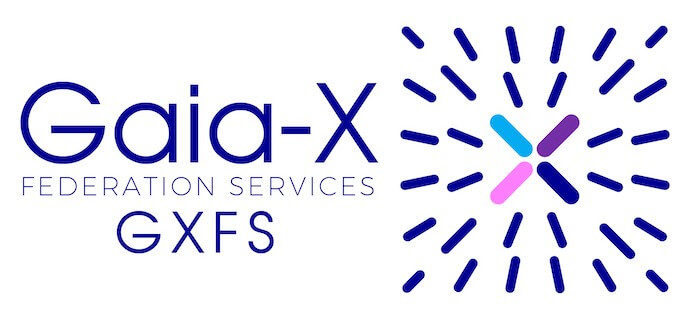Data-based disease detection and treatment – Europe is on the way to a Health Union. How Gaia-X lets us live longer independently. And why artificial intelligence, vitamin D and calcium are enough to save billions in treatment costs.
Osteoporosis makes bones porous and makes them break easily. In Germany alone, around 7 million people live with the diagnosis, according to Focus magazine (DE). Together with cardiovascular diseases, dementia, lung cancer and strokes, bone atrophy is one of the major widespread diseases and, thus, a major burden on the health system. And this is despite the fact that osteoporosis can be treated well – if it is detected early enough. But that is precisely what does not happen in most cases. Bonescreen wants to change that. The start-up from Munich has developed software that predicts how likely it is that an individual will develop osteoporosis. The big advantage: Instead of confirming the diagnosis only when there is a suspicion, as was previously the case, Bonescreen only needs any computer tomography scans that are already available, almost any CT scan: Artificial intelligence (AI) is able to determine the individual level of risk – well before symptoms appear.
Self-determined data sharing, better treatment of diseases
Digitalisation is also expected to unleash effects like these elsewhere in the health economy. Take, for example, HEALTH-X dataLOFT: The project implements an open data space to provide, use and share medical information. Its special feature: Medical reports, patient records and laboratory results, for example, can be connected to sensor values from fitness trackers, wellness apps and smartwatches. This should enable diseases to be diagnosed, treated and cared for more quickly.
To make this possible, HEALTH-X dataLOFT relies on Gaia-X. The distributed and connected data infrastructure breaks down the often proprietary medical silos and allows information to flow in a standardised and open way. At the heart of this are the software services that the Gaia-X Federation Services Project (GXFS) recently made publicly available to exchange data securely, sovereignly, transparently and with confidence. The advantage for patients: Whether electronic prescriptions, X-rays, lab results or discharge reports – individuals control what is shared with whom and for what purpose.
Gaia-X keeps services, data and services together
Secure, confident and trustworthy – in the healthcare industry with Gaia-X, everyone can use an AI service like Bonescreen easily and simply in the future. The ecosystem holds data, services and services together across the board. This is what the TEAM-X project does. The Trusted Ecosystem of Applied Medical Data eXchange also relies on Gaia-X and aims at economic aspects for the common good.
TEAM-X also focuses on care services and their data. “Digital devices are now the standard everywhere for documenting, billing and revenue-oriented planning of care services,” says Bruno Ristok, Managing Director at C&S Computer und Software, in an interview on gxfs.eu. As a consortium partner, the company is realising a digital care platform on which all information is to converge – on the one hand from the outpatient care services, but also from the smart assistance systems from the households. This is because: “From voice assistants to health apps and connected drinking cups to smart plasters – devices like these help in everyday life, but also relieve the burden on care services.”
Mobility meets supply: New opportunities for comprehensive services
The platform will then be used to create services that help people in need of care to structure their everyday lives in a self-determined way and that enable relatives to keep an eye on visits by care staff or medication intake, for example. Ristok: “If data is integrated across sectors in a Gaia-X-compliant manner, then scenarios are conceivable in which people in need of care not only plan their visits to the doctor via voice assistant, but also book the necessary means of transport fully automatically at the same time – whether wheelchair-accessible ambulance transport, an Uber or shared taxi.”
Care services should work no differently with intelligent helpers to document care services more easily and quickly. And if family doctors are connected to the platform, they can even read out the individual risk of dependence on care from smartwatches and diet plans. Eating a balanced diet and getting enough exercise reduces the risk of cardiovascular disease.
Data Space Europe: Towards the Health Union
Sharing information, realising intelligent services and digitising the healthcare industry across the board – the EU Commission has also recognised this topic. In May 2022, Brussels launched the European Health Data Space. The European Health Data Space (EHDS) is intended to pave the way for the Health Union. Citizens should be able to manage and control their information themselves and exchange it across countries. To this end, the EHDS promotes a single market for digital healthcare services and, at the same time, provides a trustworthy framework for the use of health data for medical research in compliance with the GDPR – a first for Europe.
More prevention, less treatment: AI saves health costs
Using AI to treat diseases better and improve medical care based on data – Bonescreen shows on its website that this is also economically worthwhile. So far, 50 billion Euro, or 97 percent of the health care costs Europe spends on osteoporosis, are spent on fracture care – and only 3 percent on prevention. A relationship that smart algorithms can reverse if services can be used more easily and the necessary information made more readily available. If identified early with AI, vitamin D and calcium are often sufficient to keep the patient’s own bones stable and health care costs for the general public low.
Author: Nils Klute, IT Editor and Project Manager Communication at EuroCloud Germany
